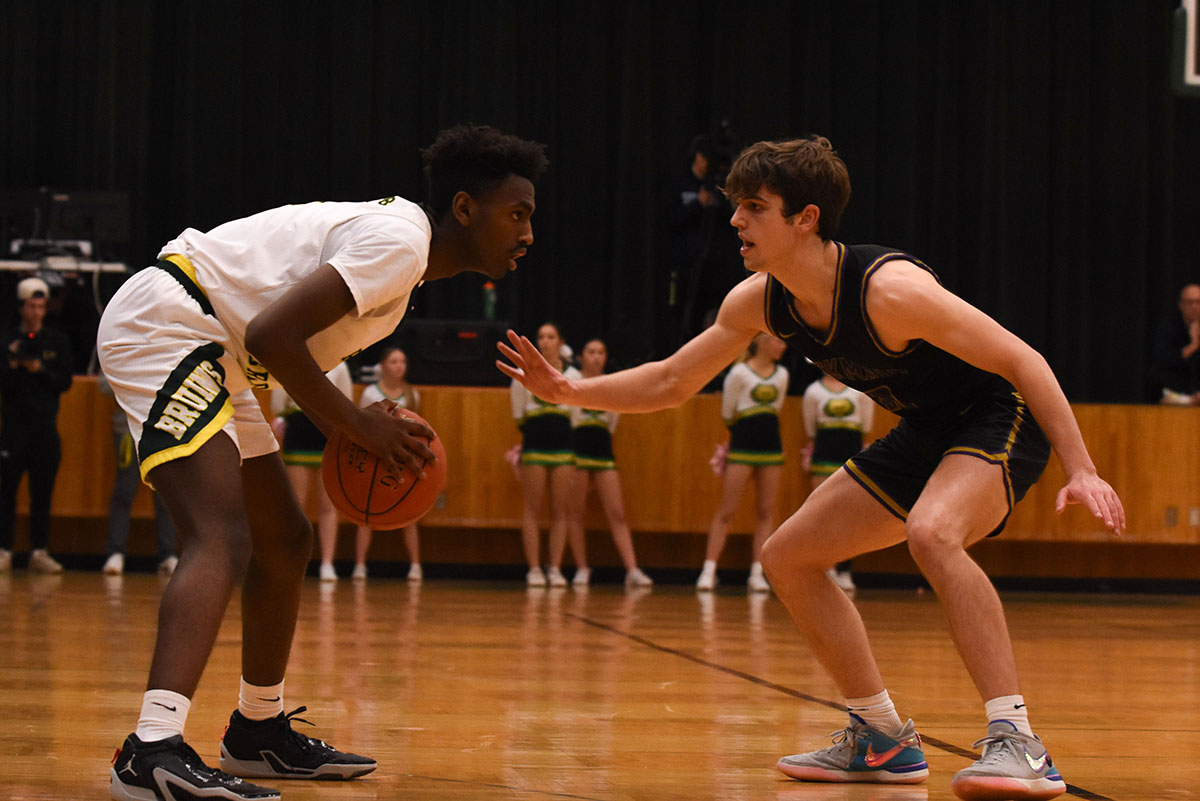
Fresh hay, livestock, sweat and manure. The sound of roaring fans in blue jeans and cowboy hats echoed through the arena while the riders and wrestlers addressed fierce tons of flesh in an attempt to gain recognition, guts and glory, all in the act of a near-death experience.
RBHS seniors Jack Clark and Jordan Fannin sit as they await to get into the bucking chute or strapped onto an angry bull. Both prepare for this event the best they can, trying to calm their nerves, all with the question of survival and a high score both in the same thought sequence.
Clark and Fannin have participated in rodeos since they were kids. Having grown up loving the sport, their ambitions started early and have been passed down through generations in the family, Fannin said.
“I was really young when I started getting into it, about five years old,” Fannin said. “It’s kind of a family tradition for me. Everybody in my family has done it. My brothers rode in competition, and my grandpa rode, so I was kind of born into the sport.”
However, the life of an avid bull rider or steer wrestler usually isn’t the top priority of the athlete. A genuine care for the animals is at heart for these two and riding and wrestling only comes after feeding and other responsibilities.
“I’ve been living on a farm my entire life,” Clark said. “Work always comes first. That’s the kind of mentality my dad placed on me, and his father on him. We just always loved to have the sport as something fun to do and to look forward to the rodeos. It’s fun to be able to ride the animals that you raise.”
Rodeo is a competitive sport that has been around since the early 1820s. Along with the knowledge these athletes have to know of the animals, it consists of events that involves horses and other livestock, designed to test the skill, speed, and ability of the cowboy and cowgirl athletes that participate in it.
These events are divided into two basic categories: the rough stock events and the timed events. Cowboys and cowgirls can compete in as many events as they want such as tie down roping, team roping, steer wrestling, saddle bronc riding, bareback bronc riding, bull riding, and barrel racing. However, being involved in Rodeo, there is great risk for injury, but Fannin is too passionate about the sport to let that stop him.
“I’ve had quite a few hospital trips over the years,” Fannin said. “Four concussions, dislocated shoulders, broken bones.”
However, Clark confirms injury is common if not assumed for it’s participants.
“You can’t do rodeo and not expect to get hurt,” Clark said. “If you do it long enough it’s going to happen. I was in a wheelchair for three weeks last year because of my back. Bull and bronco riding is so hard on your back and neck, just because there’s so much thrashing around. You can get whiplash in an instant.”
Knowing the dangers and potential injuries every time you step into the arena is always in the back of the mind of the athletes that participate in Rodeo. Some even life-threatening and possibly involving some censoring in Fannin’s case.
“My last injury, which was in the beginning of this year, I got hung up on a bareback horse and drug around the entire arena,” Fannin said. “I dislocated both of my shoulders and got stepped on bad enough on the back of my legs that the force from the horse’s hooves that it completely ripped my pants off.”
Even though the sport attracts the dare-devils, these athletes are addicted to it. Along with the thrill of the crowd, the pumping adrenaline, and the uncertainty of what bones may be broken after tonight, these guys simply can’t get enough of what they love, Clark said.
“The adrenaline rush of being in a rodeo is so great,” Clark said. “Hearing the crowd cheering for you while you’re doing your best to stay on a bucking bull is pretty exhilarating.”
By Tyler Dunlap












































































